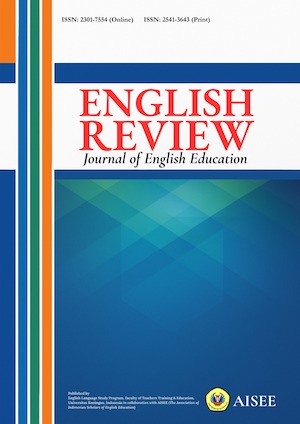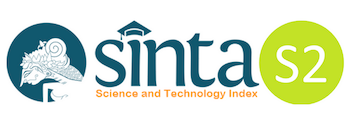ENHANCING TRANSLATION EDUCATION WITH RATPRO: A CAT TOOLS-BASED LEARNING MODEL
Abstract
The translation process greatly determines the translation results. The translated text should have the same meaning as the source text but still maintain the natural elements. A creative translation model that can help translators produce good translations that have equivalence in meaning and good grammar is essential, considering that the translation process is not just a change of language but is a process of transferring meaning from the source language to the target language (Indonesian-English). RATPro (Read, Analyze, Transfer, Produce) Translation Model that is based on Computer Assisted Translation (CAT) Tools can be used as a creative and innovative translation model that can help translation students transfer the language of scientific article manuscripts from the source language to the target language while maintaining the equivalence of meaning and naturalness of the language through excellent and correct grammar. RATPro (Read, Analyze, Transfer, Produce) Translation Model based on Computer Assisted Translation (CAT) Tools can also make it easier for students to translate because it is based on digital recording. This research aims to develop a RATPro translation model based on Computer Assisted Translation (CAT) Tools that are creative and innovative in translating scientific articles by students. The research model used is Research and Development (RnD), where research data is analyzed critically and validated to obtain valid and reliable results. The designedtranslation model will also be well used in translating authentic manuscripts in different manuscript fields.
References
Deane , P. , Odendahl , N. , Quinlan . T. , Flowles , M. , Welsh , C. , & Tatum , J. B. (2008).Cognitive models of writing: Writing proficiency as a complex integrated skill. Retrieved February 9,
, from
https://www.ets.org/Media/Research/pdf/RR08-55.pdf.
McCutchen, D., Teske, P., & Bankston, C. (2008). Writing and cognition: Implications of the cognitive architecture for learning to write and writing to learn. In C. Bazerman (Eds.), Handbook of writing research (pp. 451-470). Hillsdale, NJ: Lawrence Erlbaum.
Creswell, J. W. (2012). Educational research (4th ed.). Boston, MA: Pearson Education, Inc.
Choo, S. (2004). Investigating Ideology in the Literature curriculum in Singapore. Unpublished master’s thesis. Department of English Language and Literature: National University of Singapore.
Flower, L., & Hayes, J. R. (2008). A cognitive process theory of writing. College Composition and Communication, 32(4), 365-387.
Curriculum Planning and Development Division.
(2007). Literature in English, teaching syllabus.
Ministry of Education: Singapore.
All articles published in English Review: Journal of English Education (ERJEE) are licensed under the Creative Commons Attribution 4.0 International License (CC BY 4.0).
Copyright Ownership
Authors retain the copyright of their articles and grant ERJEE the right of first publication. The journal is granted a non-exclusive license to publish, reproduce, and distribute the article in any format, medium, or platform, provided that proper credit is given to the original authors.
License Terms – CC BY 4.0
Under the Creative Commons Attribution 4.0 International License, others are free to:
- Share — copy and redistribute the material in any medium or format
- Adapt — remix, transform, and build upon the material for any purpose, even commercially
As long as they:
- Provide appropriate credit to the original author(s) and source
- Provide a link to the license (https://creativecommons.org/licenses/by/4.0/)
- Indicate if any changes were made
There are no restrictions on the reuse, reproduction, or adaptation of published articles as long as attribution is properly given.
Author Warranties
By submitting a manuscript to ERJEE, authors confirm that:
- The work is original and does not infringe any existing copyright.
- The manuscript has not been previously published and is not under consideration elsewhere.
- All sources and references are appropriately acknowledged.
- Necessary permissions have been obtained for any copyrighted materials used.









